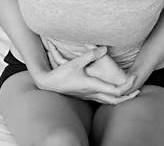perineal tears
During the 2nd stage ‘pushing ‘part of your birth you may have sustained a ‘perineal tear’ This is a tear to the tissues between the side /back of your vagina and your anus. This whole area between vagina and anus is your ‘perineum’. Controlled pushing; careful instruction from your birth professional on changing your breathing and ‘not’ pushing during the crowning of the head are all strategies to prevent and / or minimise perineal trauma.
However sometimes there is a tear and if this has happened you need to know the ‘degree’ of the tear and how to help this area to repair properly.
Tears to the genital area are graded as follows:
degrees!
Intact; Grazes; 1st degree tear; 2nd degree tear; 3rd and 4th degree tears
Grazes
Of the vagina, perineum or the inside of the labia (the lips of the vagina) are splits in the skin or result when the top layer of skin is removed (similar to when you graze your knee).
1st degree tears.
This describes a small tear of the perineum usually at the very back of the vaginal opening. It involves the top layer of skin and a small amount of underlying tissue, may need 1or 2 stitches
2nd degree tears.
This describes a tear of the perineum that involves the vaginal skin, the underlying tissue and the pelvic floor muscles.
The extent of a 2nd degree tear is equivalent to the injury caused by an average-sized episiotomy and will require stitches to help the muscle re-join to maintain the effective functioning of the pelvic floor.
3rd and 4th degree tears.
A 3rd degree tear does not occur very often. If it does, the tear extends through the vaginal skin, the underlying tissue and the superficial pelvic floor muscles and backwards to the edge of the opening of the anus, but not into the anus. It is now sub classified into 3 a,b & c and indicates the external and internal anal sphincter involvement.
A 4th degree tear is very rare and is similar to a 3rd degree tear except that it extends completely though to the anus. Most 3rd and all 4th degree tears will require repair in the operating theatre.
This 3rd or 4th degree tear will impact on your pelvic floor recovery for both your bladder and your bowel and you should see a Women’s Health Physio before you leave the hospital, at 2 weeks, 4 weeks and 6 weeks to discuss your ‘rehab’. You will need further guidance and care for your Pelvic Floor rehab during the next 6-12 months.
If you are told you have a ‘large’ 2nd degree tear …you may have a 3rd degree tear that was not able to be fully diagnosed and you should have a careful follow up at 2 weeks with your Women’s Health Physio. Healing takes time. Be kind to yourself and don’t do too much too soon!! This link has great advice on caring for your perineum.
Early treatment for your perineum
Pain Relief
A perineal tear can be uncomfortable, especially for the first few days. Please ask the midwives or doctor for analgesia.
Ice Treatment
“Ice can help reduce both pain and swelling, and is particularly helpful within the first 3 days. ice ‘fingers’ or wetted then frozen sanitary pads can be very helpful Ensure ice is not directly in contact with your skin by either wrapping it in a wet cloth or making a hole in the back of a clean pad and putting the ice inside the pad, behind the padding. Keep ice in place for only 10-15 mins at a time. The ice should then be removed and discarded and a clean pad applied. Repeat approximately 2 hourly.
Don’t sit directly on the ice.
The ice should feel cold and may cause the area to feel numb but should not feel like it is burning.
Initially, you may be most comfortable in lying.”
Bowels avoid Constipation
In order to protect the stitches whilst they are healing, it is important for your bowel motions to be soft but formed and that you avoid straining when passing a bowel motion.
Avoid Constipation especially after delivery, for many reasons
* Straining may damage perineal stitches
* May impact on any pelvic trauma from assisted birth interventions
* Can cause pain in the ‘C ’scar due to abdominal distention.
Support your perineum if you have had a tear or an episiotomy; folding some clean toilet paper and placing it gently on the perineum where the stitches are and holding it there while you go to the toilet, can splint the weakened perineum and help support the stitches when opening your bowels for about 4 weeks. You can also support your C scar. Use a stool softener – lactulose in hospital, then Movecol, or Normacol for combined fibre and colonic smooth muscle stimulant.
Correct sitting position on the toilet and allowing the pelvic floor to relax. You may need to support your ‘C’ scar to relax your tummy and let go.
Trying to maintain a good toilet position may be useful for people that find it difficult to pass a stool, who strain when defecating or who suffer from constipation. There is no right or wrong way to sit on the toilet; however the following pointers may help make emptying your bowels easier.
• Lean forward when you are sitting on the toilet with your hands resting on your thighs
• Make sure that you knees are bent and are higher than your hips (it may help to use a footstool if your toilet is high or you are not very tall)
• Make sure your feet are resting on the ground -(or on a footstool)
• Try to breathe to the bottom of your lungs with your mouth open to prevent straining and contracting your pelvic floor (diaphragmatic breathing)
• Bulge your tummy muscles forward as you take a deep breath in and then ‘brace’ your tummy to prevent it from bulging further forwards. Do not tighten your tummy.
• Relax your anal sphincter to open your bottom and let the stool out
• Use your deep breath to increase the pressure in your abdomen and push down towards your anus
For those of you who wish to see the exact protocol for perineal care (in Queensland) check out this link
Continuing rehab for your perineum
At the 6 week check up with your doctor /obstetrician ask about your perineum and healing. if you haven’t seen a Women’s Health Physio now is the time to come and see me.
We can discuss any bladder or bowel symptoms and after a careful internal examination I can guide you on a progressive pelvic floor exercise plan to rehab this area.
This may include any of the following
- pelvic floor muscle awareness of lift, squeeze and relax
- education on what not to do yet whilst everything is still healing.
- guidance on sex position
- guidance on what other exercise you can do which will not put undue strain on recovering tissues.
This area will heal with care and patience. Sometimes it is painful down there and you need re-assurance and guidance to help you through.
I hope this has been helpful for you and empowers you to understand yourself!

